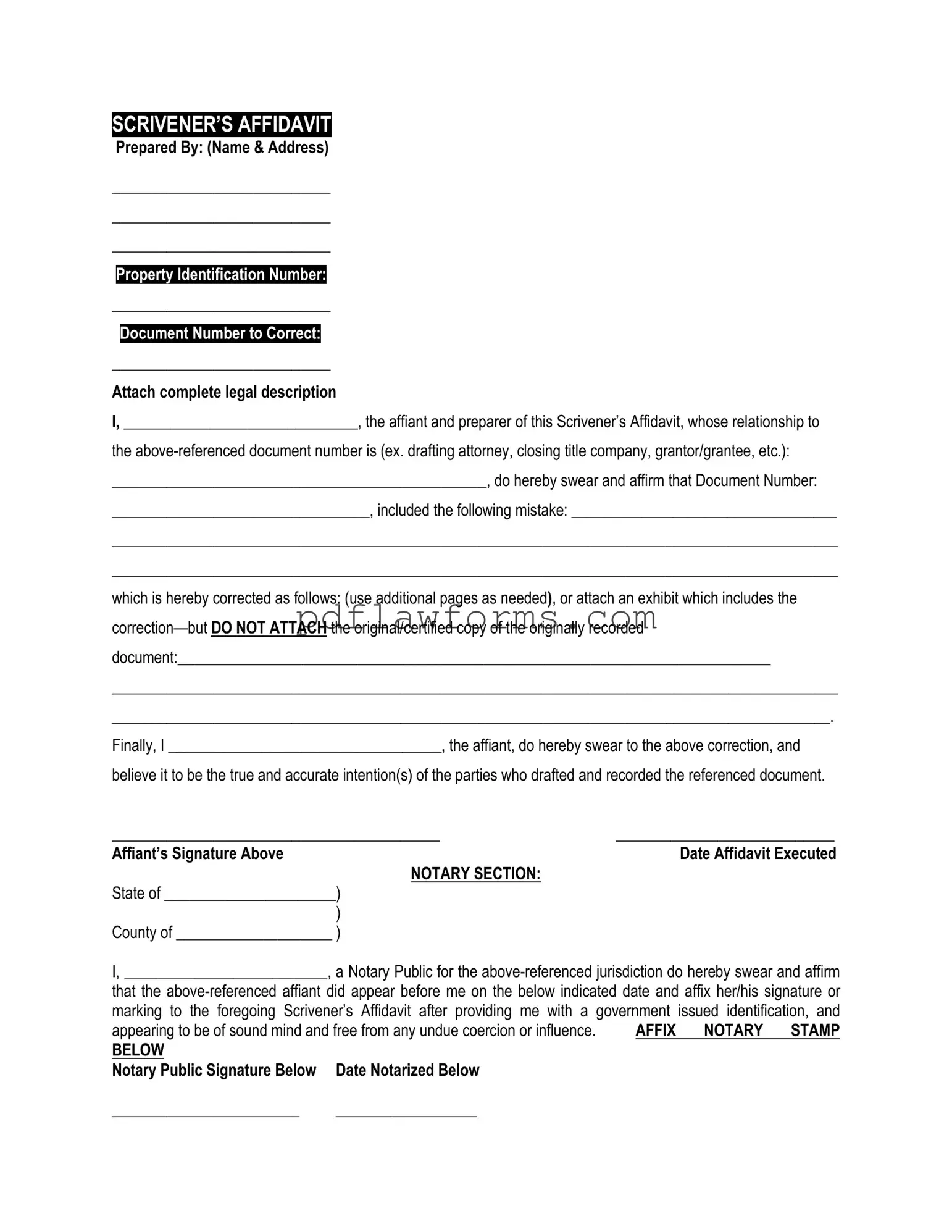Filling out the Scrivener's Affidavit form can be a straightforward process, but many individuals make common mistakes that can lead to delays or complications. One frequent error is failing to provide complete information. Every section of the form is important. Incomplete sections can raise questions and require additional clarification, which can slow down the process.
Another mistake involves incorrect signatures. It's crucial that the affidavit is signed by the appropriate parties. If the wrong person signs, or if the signature is not notarized properly, the affidavit may not be accepted. Always double-check that the signature matches the name printed on the form.
People often overlook the date. Not dating the affidavit can create confusion about when the document was executed. This can be particularly problematic if the affidavit is time-sensitive. Ensure that the date is clearly written and corresponds to the signing date.
Errors in the notary section are also common. The notary must complete their section accurately, including their seal and signature. If any part of this section is missing or incorrect, the affidavit may not be valid. It is essential to verify that the notary is licensed and that all required information is included.
Another mistake is using vague language. The affidavit should be clear and specific. Ambiguities can lead to misinterpretations and may compromise the document's effectiveness. Take the time to ensure that all statements are precise and unambiguous.
People sometimes fail to attach necessary documents. If supporting documents are required, they must be included with the affidavit. Missing attachments can lead to delays and additional requests for information. Always review the requirements carefully before submission.
Lastly, individuals may not keep copies of their submitted affidavits. Having a copy is crucial for personal records and future reference. It ensures that you have proof of what was submitted and can help address any issues that may arise later. Always make copies before submitting any legal documents.
